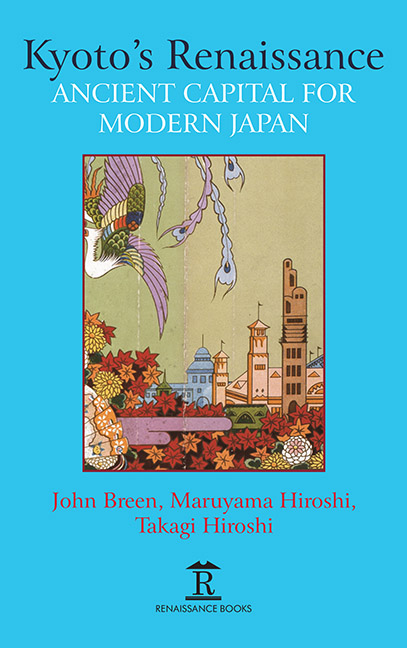Chapter 5 - The Eleventh-Centenary of the Founding of Heian and the Heian Shrine
Published online by Cambridge University Press: 30 April 2022
Summary
INTRODUCTION
THE ELEVENTH-CENTENARY of the founding of Heian was a city festival held in Kyoto in 1895. Its spatial setting was the Okazaki district on the eastern bank of the Kamo River, where the Heian Shrine stands today. Into the southern part of this district extended the site of the Fourth National Industrial Exhibition, and together the two events – exhibition and eleventh-centenary – brought great crowds to the city that year. Between Okazaki and Kyoto station ran the nation's first streetcars, which attracted much attention in publications like the illustrated magazine Fūzoku gahō. The success of the eleventh-centenary celebrations proved infectious, and became the model for many other city festivals. In recent years, there has been a surge of interest in the historical significance of such events, and this has also led people to a reconsideration of Kyoto's Eleventh-Centenary. Elsewhere, I have focused on city festivals as the embodiment of diverse historical awareness in a given local society, and argued the importance of considering the contested nature of such events.
In brief, Kyoto city's merchants and traders proposed the Eleventh-Centenary as a way of promoting the city. It was initially conceived as a public celebration of the city of Kyoto, in contrast to more conservative, reactionary campaigning for a public celebration of Emperor Kanmu, the city's eighth century founder. It was due to competition with other cities to attract the National Industrial Exhibition, and to links with members of the nobility and bureaucrats who favored staging the exhibition and Eleventh- Centenary simultaneously, that the Eleventh-Centenary subsequently escalated in scale, transforming from a city festival to a national festival. Kyoto faced powerful competition from the likes of Tokyo and Osaka to attract the government-sponsored exhibition. And to secure the Eleventh-Centenary, Kyoto had no choice but to heed the views of the government leaders in Tokyo.
In this chapter, I explore the context for the preparations for the Eleventh-Centenary and the National Industrial Exhibition. I consider, in particular, how the site for the Eleventh-Centenary came to be constituted as the Heian Shrine. Heian Shrine is, perhaps, the best known of the many shrines constructed in the modern era, and books and tourist literature for a general audience have tended to stress that it was constructed with the support of the people in the ferment of the celebrations.
- Type
- Chapter
- Information
- Kyoto's RenaissanceAncient Capital for Modern Japan, pp. 123 - 145Publisher: Amsterdam University PressPrint publication year: 2020



